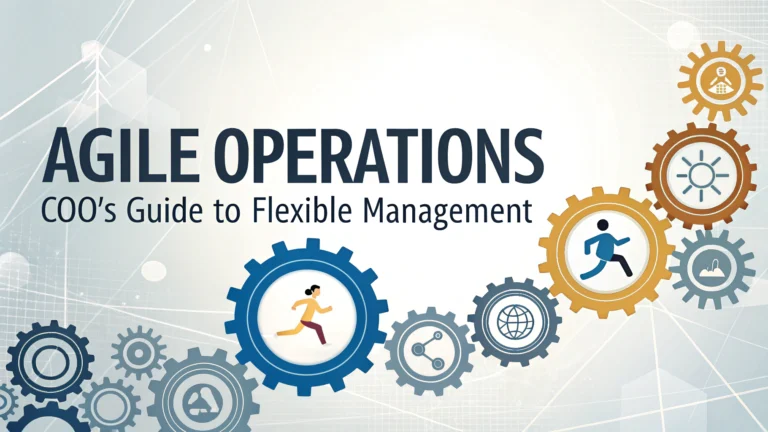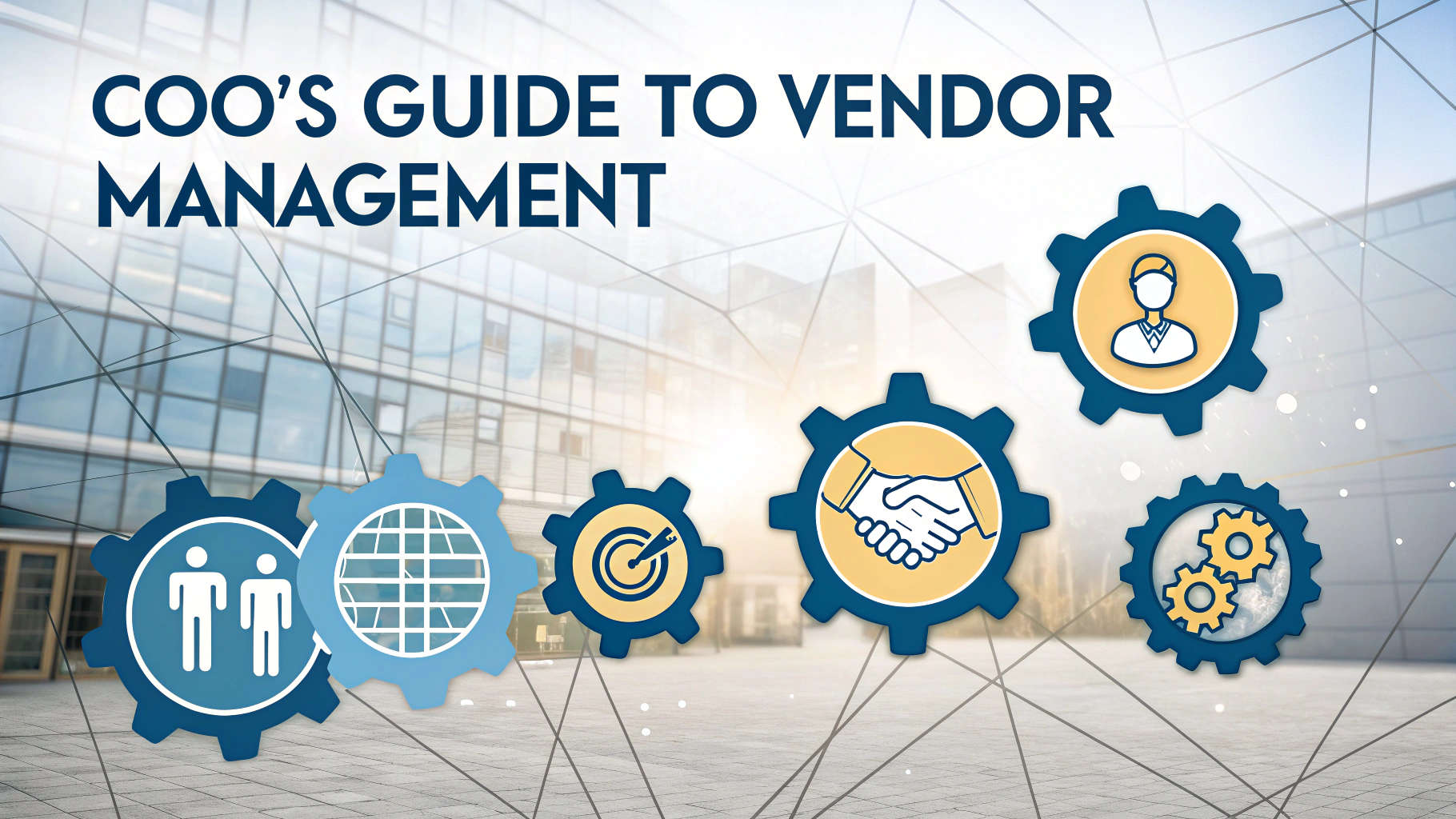Modern businesses need flexible operations to stay competitive and respond quickly to market changes.
Agile operations allow Chief Operating Officers (COOs) to lead their organizations with adaptability while maintaining efficiency and quality standards.
This guide explores practical strategies for implementing agile operations, with specific tools and techniques for COOs to transform their management approach.
Core Components of Agile Operations
- Iterative Planning: Short-term planning cycles with regular reviews
- Cross-functional Teams: Breaking down departmental silos
- Real-time Data Analysis: Quick decision-making based on current metrics
- Continuous Improvement: Regular feedback loops and process optimization
Implementing Agile Management Practices
Start with a pilot program in one department to test and refine agile practices before company-wide implementation.
Create small, self-organizing teams with clear objectives and accountability measures.
Establish daily stand-up meetings lasting no more than 15 minutes to address roadblocks and progress.
Technology Stack for Agile Operations
| Tool Type | Recommended Solutions | Primary Use |
|---|---|---|
| Project Management | Jira, Trello, Asana | Task tracking and team coordination |
| Communication | Slack, Microsoft Teams | Real-time team collaboration |
| Analytics | Tableau, Power BI | Data visualization and reporting |
Performance Metrics and KPIs
- Cycle time reduction
- Customer satisfaction scores
- Employee engagement levels
- Process efficiency rates
- Revenue per employee
Change Management Strategy
Create a clear communication plan that explains the benefits of agile operations to all stakeholders.
Provide comprehensive training programs for employees at all levels.
Set realistic timelines for transition and celebrate small wins along the way.
Risk Management in Agile Operations
- Identify Risks: Regular risk assessment meetings
- Mitigation Plans: Documented strategies for each identified risk
- Response Teams: Dedicated groups for handling operational issues
Building Resilient Operations
Develop backup plans for critical business processes and systems.
Cross-train team members to ensure operational continuity.
Implement robust documentation practices for knowledge retention.
Next Steps for COOs
Assess your current operational maturity using standardized frameworks.
Create a roadmap for agile transformation with clear milestones.
For professional guidance on agile operations implementation, contact the Agile Business Consortium (www.agilebusiness.org) or the Scrum Alliance (www.scrumalliance.org).
Employee Training and Development
Invest in comprehensive training programs focused on agile methodologies and tools.
Create mentorship programs pairing experienced agile practitioners with new team members.
Develop skill matrices to identify and address knowledge gaps across teams.
Measuring Success
Short-term Indicators
- Sprint completion rates
- Team velocity improvements
- Reduction in bottlenecks
- Quality metrics achievement
Long-term Metrics
- Market responsiveness
- Innovation rate
- Customer retention
- Operational cost reduction
Scaling Agile Operations
Implement a hub-and-spoke model for larger organizations to maintain agility.
Create centers of excellence to standardize best practices across departments.
Establish governance frameworks that balance autonomy with control.
Transforming Operations for Future Success
Monitor industry trends and emerging technologies to stay ahead of operational innovations.
Build a culture of continuous learning and adaptation within the organization.
Maintain flexibility in operational strategies to address future market challenges effectively.
Remember that agile transformation is an ongoing journey rather than a destination, requiring constant refinement and evolution of practices to maintain competitive advantage.
FAQs
- What is Agile Operations, and how does it differ from traditional operational management?
Agile Operations is a flexible management approach that applies Agile principles to operational functions, emphasizing iterative improvements, rapid response to change, and cross-functional collaboration. Unlike traditional management, which follows rigid hierarchies and fixed processes, Agile Operations promotes adaptability, continuous feedback, and decentralized decision-making. - How can a COO successfully implement Agile Operations in a traditional organization?
A COO can implement Agile Operations by starting with pilot programs in selected departments, providing comprehensive training, establishing clear communication channels, creating cross-functional teams, and gradually scaling successful practices across the organization while measuring and adjusting based on outcomes. - What are the key metrics for measuring success in Agile Operations?
Key metrics include cycle time, lead time, throughput rate, customer satisfaction scores, employee engagement levels, sprint velocity, defect rates, and time-to-market for new initiatives. These metrics should align with both operational efficiency and business value creation. - How does Agile Operations impact organizational structure and reporting lines?
Agile Operations typically flattens hierarchies, creates cross-functional teams, establishes matrix reporting structures, and empowers team leaders with decision-making authority. This often requires restructuring traditional departments into product-oriented or value-stream-aligned teams. - What role does technology play in enabling Agile Operations?
Technology serves as an enabler through collaborative tools, workflow automation, data analytics platforms, cloud solutions, and integrated systems that support real-time decision-making, transparency, and efficient communication across teams. - How can COOs balance Agile flexibility with necessary operational controls?
COOs can maintain balance by implementing adaptive governance frameworks, establishing clear boundaries and guidelines, using automated compliance checks, maintaining risk management protocols, and creating feedback loops that ensure control without hampering agility. - What are the common challenges in transitioning to Agile Operations?
Common challenges include resistance to change, cultural misalignment, lack of proper training, inadequate technology infrastructure, difficulty in maintaining consistency across teams, and challenges in scaling Agile practices across the organization. - How does Agile Operations integrate with other business functions like finance and HR?
Integration occurs through aligned planning cycles, shared metrics, collaborative budgeting processes, Agile HR practices (such as flexible performance management), and coordinated resource allocation strategies that support operational agility. - What is the role of continuous improvement in Agile Operations?
Continuous improvement is fundamental to Agile Operations, involving regular retrospectives, data-driven decision making, experimentation with new processes, immediate feedback incorporation, and systematic evaluation of operational effectiveness. - How can COOs ensure successful change management during Agile transformation?
COOs can ensure successful change management by creating a clear vision, establishing strong leadership support, providing adequate resources and training, communicating effectively, celebrating quick wins, and addressing resistance through engagement and education.







